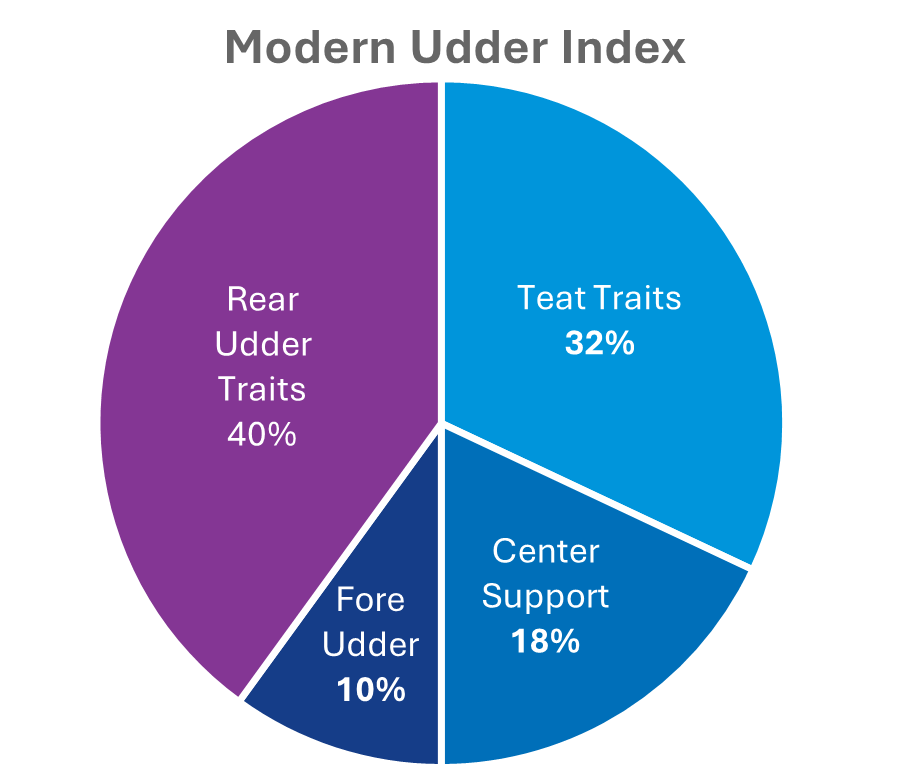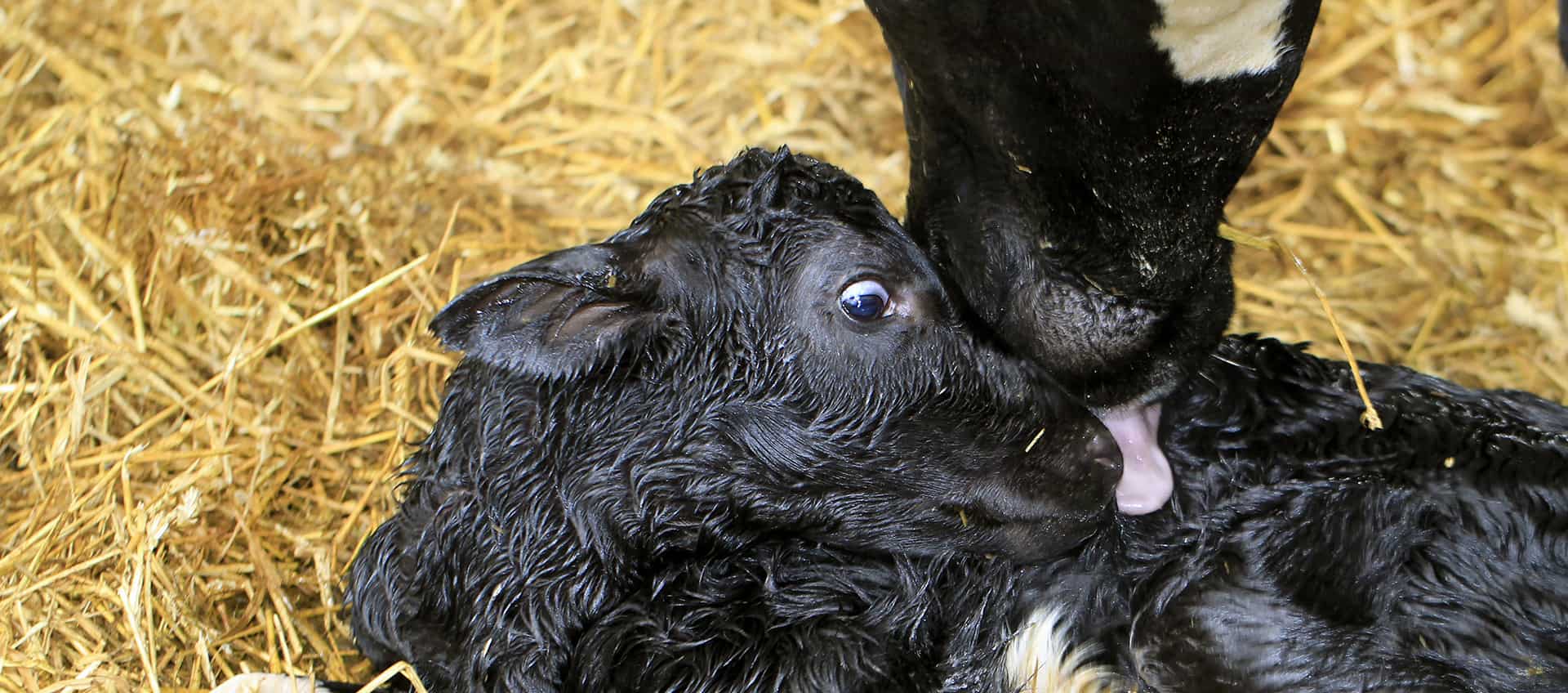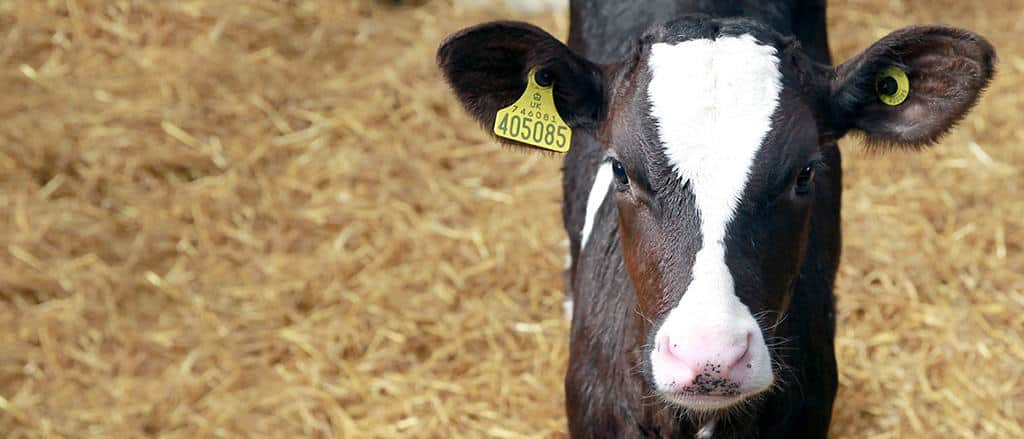MUI, or Modern Udder Index, was created by PEAK for progressive dairies that need one or both of the following:
- Emphasis on udder selection that promotes moderate sized, long-living, highly productive cows
- A next generation of cows that operate more efficiently in the parlor or robot because they have a more desirable udder cleft, teat length, and teat placement.
The primary objective of MUI is to maintain functional udder traits that impact parlor performance while advancing udder traits that contribute to lifetime production.
What traits are included in MUI?
- 20% Rear Udder Height*
- 20% Rear Udder Width*
- 14% Teat Length***
- 10% Fore Udder Attachment*
- 9% Udder Depth***
- 9% Udder Cleft***
- 9% Rear Teat Placement***
- 9% Front Teat Placement***
* = trait with a capped maximum | *** = two-way trait

What is a capped maximum trait?
MUI uses capped maximum values to apply positive selection pressure for traits to a certain level while not rewarding extra value beyond that point. Research demonstrates added benefit for FUA, RUH and RUW. However, extremes for these traits can negatively impact the functional traits like udder cleft and teat length and placement.
What is a “two-way” trait?
Also known as an intermediate-optimum trait, two-way traits promote selection toward the population average and away from extreme values in either direction. A traditional example of a two-way trait is rear leg side view, because you do not want rear legs that are too straight, nor too set through the hock. Many of today’s conformation traits are examples of two-way traits where change is not desirable, and average is the best outcome.
How is MUI calculated?
MUI is created by PEAK from the eight udder traits measured and reported by Holstein Association USA, Inc. MUI is not calculated by or associated with any official industry indexes or composites. MUI is shared with URUS for the express purpose of genetic selection for udders designed for the modern, commercial dairy environment.
Is MUI relevant for robot herds?
Absolutely. The traits that most robotic milking herds look at are teat length (they’re currently too short), and teat placement (they’re currently too close), as well as udder cleft (too, strong, which makes teats even closer). These traits are addressed properly as part of the Modern Udder Index, along with moderating stature and maintaining milk and component production. This makes MUI a suitable selection tool to create the kind of cows that fit a robot milking system.
Is MUI relevant for herds milking through a parlor?
The same traits that cause headaches for robotic herds also lead to a lack of efficiency in milking parlors. It’s just as hard for milking crew members to attach milking units to teats that are too short or too close together as it is for a robot to identify those problem teats. Parlors also have a limit on the size of cow that will comfortably fit in each stall. Knowing that, MUI is a solution to address the udder traits of concern, while moderating stature and maintaining production.
What is a good number for MUI?
Values for MUI range from about 0.00 – 15.00. Higher numbers are more favorable for creating cows with modern udders that work more functionally in today’s progressive dairy environments.
How can you include MUI within a genetic plan?
If you determine that MUI fits your genetic goals, you may want to include this within your farm’s customized genetic plan. Modern Udder Index is included in Alta Bull Search so you can view the MUI values on Alta sires. You can also use the Advanced Search option to build MUI into your customized genetic plan – find it under the Conformation traits section.
We encourage you to work with your Alta advisor if you are building a new genetic plan or changing your selection criteria.




